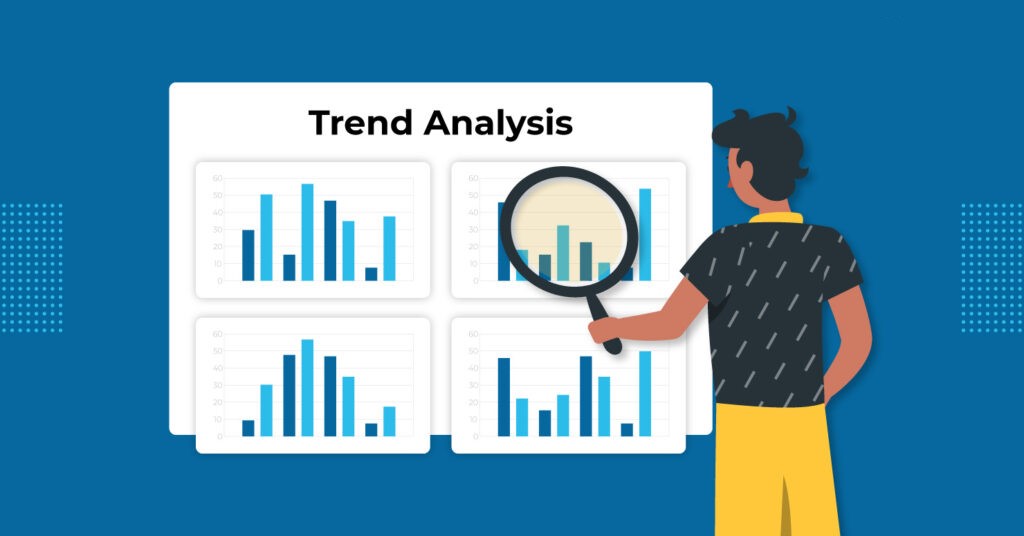Analyzing financial statements for trends is essential for any business seeking to make informed strategic decisions. These statements provide valuable insights into a company’s financial health, performance over time, and future potential. By carefully examining the patterns and data within financial statements, businesses can identify trends that influence profitability, liquidity, and overall stability. Whether you’re an executive, business owner, or financial analyst, understanding how to read and analyze these statements can help drive smart business decisions.
Why Analyzing Financial Statements for Trends Matters
Data-driven decision-making is key to maintaining and growing a business. Financial statements, such as the income statement, balance sheet, and cash flow statement, reveal much more than just numbers. They provide a snapshot of the business’s financial status, allowing for comparisons over different periods. Analyzing financial statements for trends enables businesses to track changes, anticipate challenges, and seize opportunities for growth.
One of the primary benefits of trend analysis is the ability to measure performance over time. By analyzing year-on-year or quarter-on-quarter trends, businesses can assess if revenue growth remains consistent or unstable. Tracking trends in expenses, profitability, and liabilities reveals areas of concern or success. This information enables businesses to adjust strategies and address financial challenges or capitalize on positive trends.
Another important aspect of trend analysis is its ability to support financial forecasting. By understanding past trends, businesses can better predict future performance, allocate resources more effectively, and set realistic financial goals. The process of analyzing financial statements for trends also helps businesses monitor their competitive position within the industry, as financial metrics can be compared to industry benchmarks.
Key Financial Statements to Analyze for Trends
The three primary financial statements used in trend analysis are the income statement, balance sheet, and cash flow statement. Each offers unique insights into different aspects of the business’s financial condition.
The income statement, also known as the profit and loss statement, provides details on a company’s revenue, expenses, and profits over a specific period. By analyzing this statement, businesses can identify trends in sales growth, cost of goods sold (COGS), and operating expenses. For example, if revenue is increasing but profits are shrinking, it could indicate rising costs or inefficiencies.
The balance sheet gives a snapshot of a company’s assets, liabilities, and equity at a particular point in time. When analyzing the balance sheet for trends, it’s important to observe changes in the company’s asset base, debt levels, and liquidity. A growing asset base combined with declining debt levels is generally a positive sign, while an increase in liabilities without corresponding asset growth could be a red flag.
The cash flow statement tracks the flow of cash in and out of the business. Analyzing cash flow trends helps businesses assess their ability to generate cash and manage their working capital. A consistent positive cash flow trend indicates good financial health, while negative cash flow trends could suggest liquidity issues.
Steps to Analyze Financial Statements for Trends
To effectively analyze financial statements for trends, it’s important to take a systematic approach. The first step is gathering historical financial data. Having access to several years’ worth of financial statements allows businesses to identify long-term trends, rather than focusing on short-term fluctuations.
Next, perform a comparative analysis. Compare financial figures from different periods to spot patterns in revenue, expenses, profits, and other key metrics. For instance, comparing gross profit margins over several years can help determine if the business is maintaining efficiency in its production costs.
Another important aspect of trend analysis is ratio analysis. Financial ratios, such as the current ratio, return on equity (ROE), and debt-to-equity ratio, are valuable tools for assessing a company’s performance relative to industry norms. These ratios allow businesses to quantify trends and measure their financial health against competitors. A consistent improvement in key financial ratios suggests strong financial management, while declining ratios could indicate underlying issues.
Furthermore, businesses should consider external factors when analyzing trends. Market conditions, economic shifts, and changes in consumer behavior can all impact financial trends. By combining internal financial analysis with an understanding of the broader business environment, companies can make more informed decisions.
Common Trends to Watch
When analyzing financial statements for trends, there are several common patterns that businesses should monitor. One of the most important trends is revenue growth. Consistent growth in sales revenue is a positive indicator of a company’s ability to attract and retain customers. However, businesses should also examine the quality of their revenue growth by looking at gross profit margins. A shrinking margin, despite increasing revenue, could signal rising costs or competitive pressures.
Another key trend to watch is operating expenses. Businesses that consistently manage to keep their operating expenses in check often enjoy higher profitability. However, if operating expenses grow faster than revenue, this could signal inefficiencies or excessive spending, which may need to be addressed.
Cash flow trends are also critical. Positive cash flow from operating activities indicates that a business is generating sufficient cash to cover its expenses, while negative trends in cash flow may suggest liquidity problems. By tracking changes in cash flow over time, businesses can ensure they maintain enough liquidity to meet short-term obligations.
Debt levels are another important area to monitor. A rising debt-to-equity ratio could indicate that a company is relying too heavily on borrowing to finance its operations. While some level of debt is often necessary, businesses need to ensure that they can manage their debt obligations without jeopardizing their financial stability.
Using Trend Analysis to Drive Business Strategy
Analyzing financial statements for trends is not just about identifying past patterns; it’s about using that data to shape the future. Once trends have been identified, businesses can use this information to refine their strategies. For example, if a company identifies a trend of increasing operating costs, it may choose to invest in technology or streamline processes to improve efficiency.
Businesses can also use trend analysis to set realistic financial goals. Understanding how the company has performed historically allows executives to create more accurate financial forecasts and budgets. These insights also help businesses allocate resources more effectively, ensuring that investments are directed towards the areas with the highest potential for growth.
Moreover, trend analysis plays a critical role in risk management. By identifying negative trends early, businesses can take corrective action before issues escalate. For instance, if a company notices declining profit margins, it can explore cost-cutting measures or renegotiate supplier contracts to improve profitability.
The Importance of Regularly Analyzing Financial Statements for Trends
Regularly analyzing financial statements for trends is an essential practice for any business looking to maintain financial health and gain a competitive edge. Trend analysis provides businesses with valuable insights into their financial performance, helping them make informed decisions, identify risks, and seize opportunities for growth. By taking a proactive approach to financial analysis, businesses can improve their strategic planning, financial forecasting, and overall profitability.
Through consistent monitoring of key financial trends, companies can stay ahead of potential challenges and position themselves for long-term success. Whether using manual methods or financial analysis software, the key is to approach trend analysis systematically and thoughtfully.


